11 Of The Fastest Fish In The Ocean (And 4 Surprisingly Slow Ones)
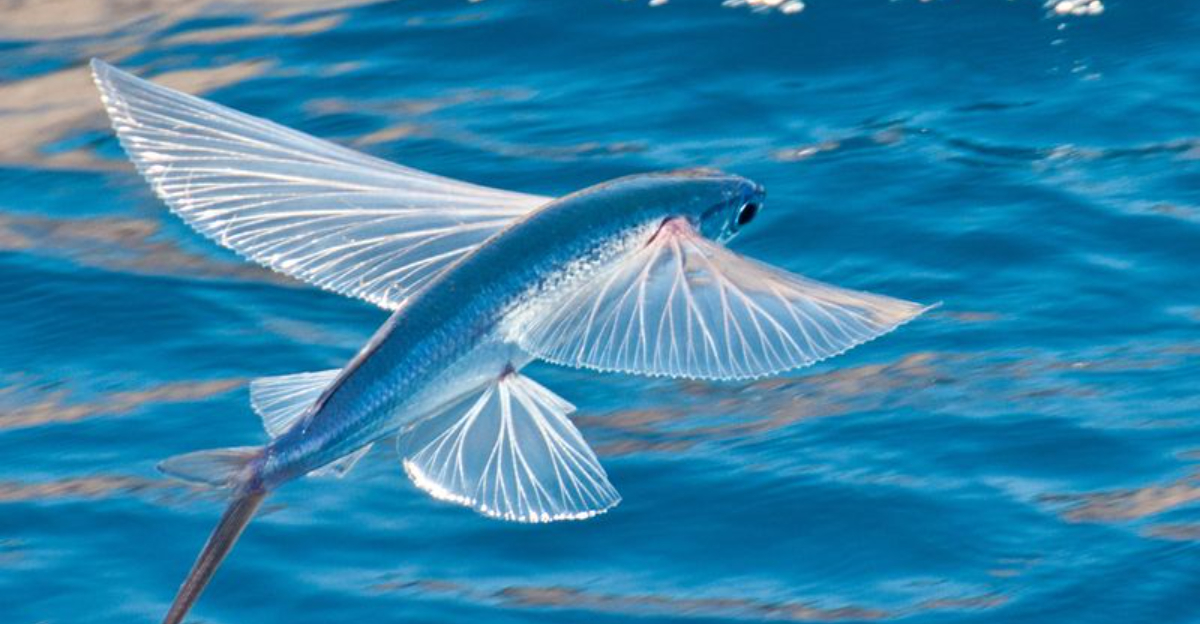
The ocean is home to some of the most impressive speedsters in the animal kingdom. From sailfish that can outpace most boats to sharks that rival Olympic swimmers, these underwater racers have evolved remarkable adaptations for speed.
But not all fish are built for the fast lane – some ocean dwellers take life at an incredibly leisurely pace. Let’s explore the speedsters and slowpokes that make ocean life so fascinating!
1. Sailfish
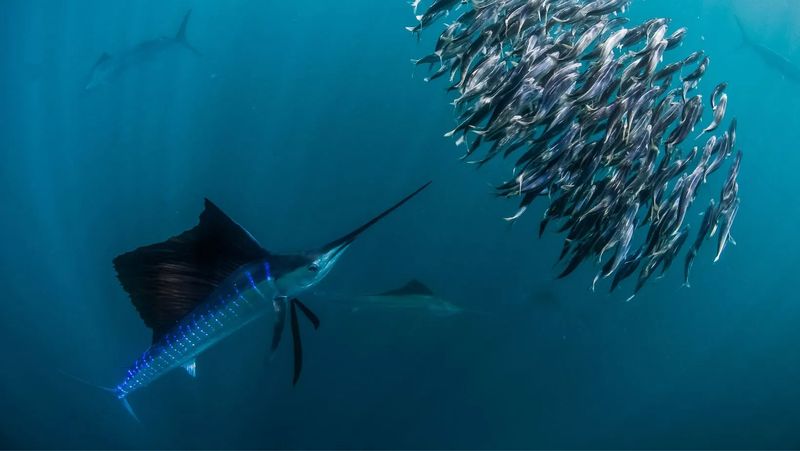
Crowned the fastest fish in the sea, sailfish zoom through water at a mind-blowing 68 mph! Their sword-like bill slices through water with minimal resistance.
The sailfish’s massive dorsal fin (its “sail”) can fold into a groove when swimming at top speeds, creating the perfect hydrodynamic form. These oceanic speedsters use their velocity to stun prey by slashing through schools of fish.
2. Black Marlin
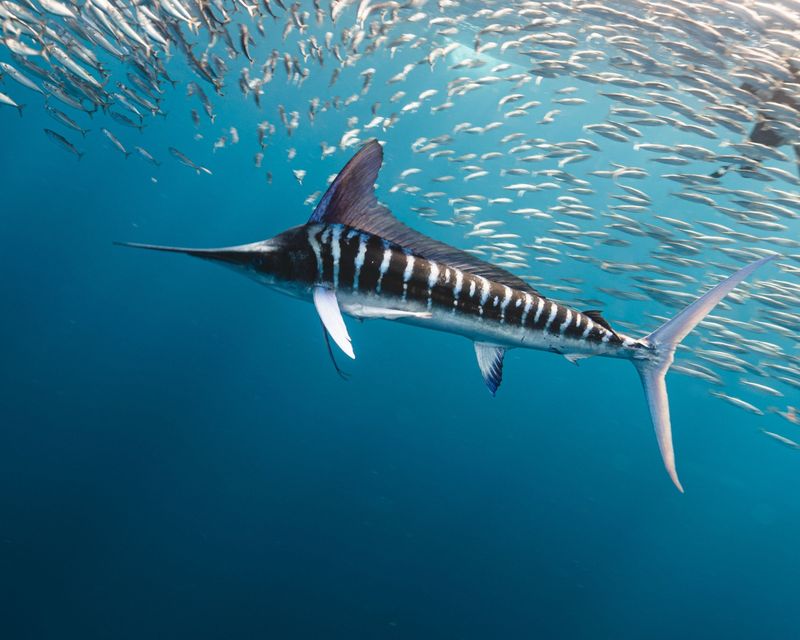
Muscular and powerful, black marlins tear through ocean waters at over 50 mph. Unlike other billfish, their pectoral fins cannot fold against their bodies, yet they remain incredibly streamlined.
Game fishers prize these ocean missiles for their fighting spirit and spectacular leaps when hooked. Their rigidity at high speeds helps them maintain control while chasing down fast-moving prey like tuna and mackerel.
3. Yellowfin Tuna
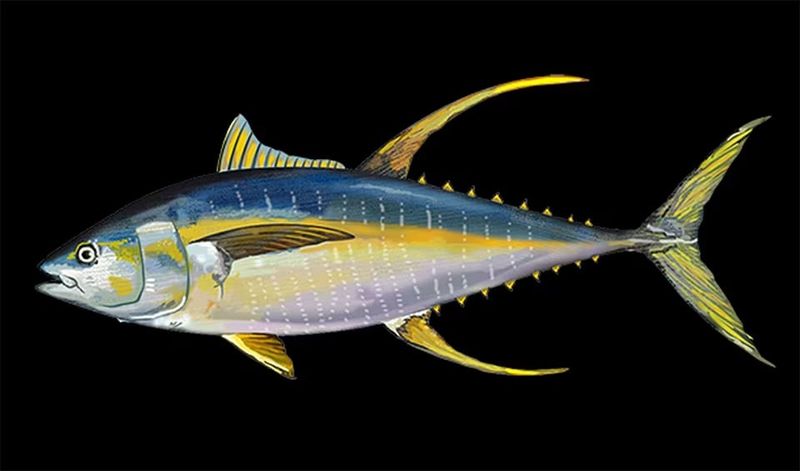
Yellowfin tuna are built like torpedoes, reaching impressive speeds of 46 mph. Their crescent-shaped tails generate tremendous thrust with minimal effort.
These metallic-looking speedsters can raise their body temperature above the surrounding water, giving their muscles extra power during high-speed chases. Schools of yellowfin work together to corral smaller fish, using their remarkable speed to create living walls that trap their prey.
4. Swordfish

Swordfish slice through water at an astonishing 60 mph thanks to their perfectly streamlined bodies. They have a special heating organ near their eyes that keeps their brain and vision sharp during high-speed hunts.
Their iconic sword isn’t primarily a weapon but acts as a hydrodynamic feature that reduces drag. These solitary hunters make vertical migrations daily, sometimes diving 1,800 feet deep before racing back to surface waters.
5. Wahoo
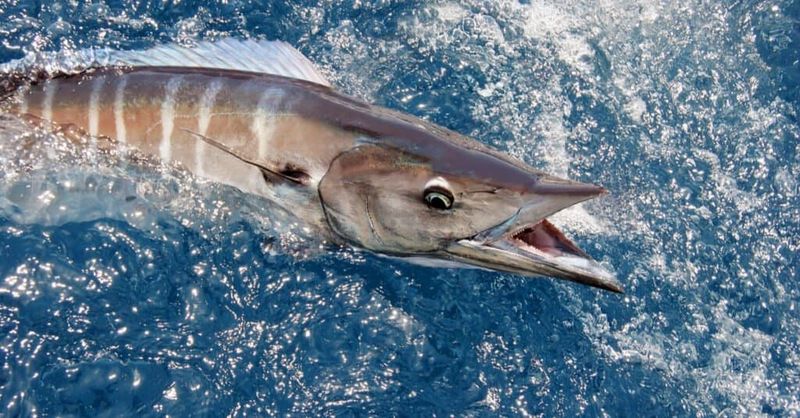
Wahoo fish are the greyhounds of the sea, capable of explosive 48 mph bursts. Their torpedo-shaped bodies have minimal scales, reducing drag dramatically during high-speed chases.
Hawaiian fishermen named them “Wahoo” after the island of Oahu, where these speedsters are commonly found. Their razor-sharp teeth and powerful jaws make them formidable hunters, able to catch prey mid-sprint without slowing down.
6. Bluefin Tuna
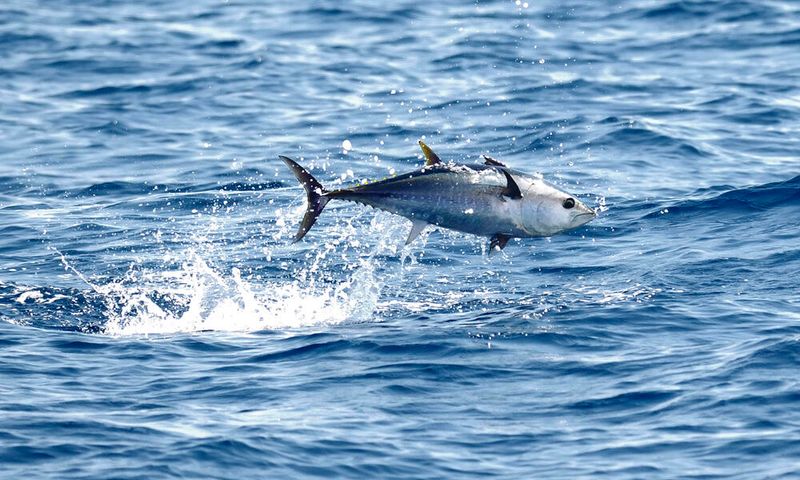
Bluefin tuna are living submarines, powering through water at 43 mph. Their bodies are nearly 40% red muscle, designed specifically for sustained high-speed swimming.
These massive fish can weigh over 1,500 pounds yet still accelerate like sports cars. Bluefins maintain body temperatures up to 20°F warmer than surrounding waters through a specialized heat exchange system, giving them a significant speed advantage in cold seas.
7. Mahi-Mahi
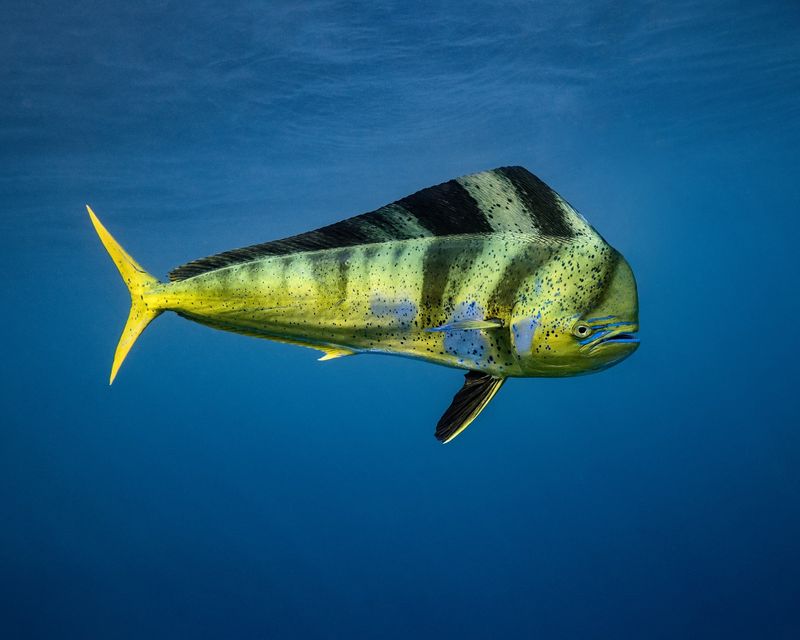
Electric blue and golden yellow, mahi-mahi aren’t just pretty faces – they’re 57 mph underwater rockets! Their compressed bodies and tapered heads minimize water resistance.
Males sport prominent foreheads that become more pronounced with age. These vibrant speedsters are famous for their acrobatic jumps when hooked, and they can grow incredibly quickly, sometimes gaining two pounds per week in ideal conditions.
8. Shortfin Mako Shark
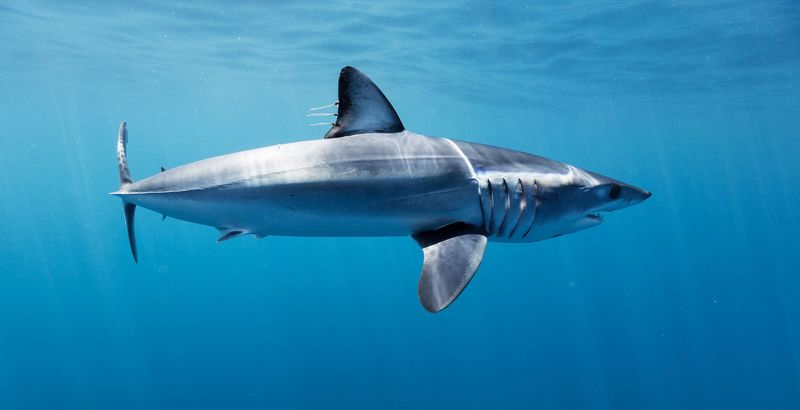
Mako sharks are the cheetahs of the ocean, hitting speeds of 60 mph in short bursts. Their streamlined bodies feature skin covered in tiny, tooth-like scales that reduce drag.
These sharks have special channels in their skin that create tiny vortices, actually pulling them forward through the water. Makos can leap up to 30 feet out of the water and are known for their intelligence and curious nature around boats.
9. Flying Fish

Flying fish don’t just swim fast – they launch themselves into the air to escape danger! These unique creatures reach underwater speeds of 35 mph before breaking the surface.
Their wing-like pectoral fins can span up to 12 inches, allowing them to glide for distances of 650 feet. Some flying fish can make multiple jumps in succession, repeatedly dipping their tails in water to gain new momentum without fully returning to the sea.
10. Atlantic Blue Marlin
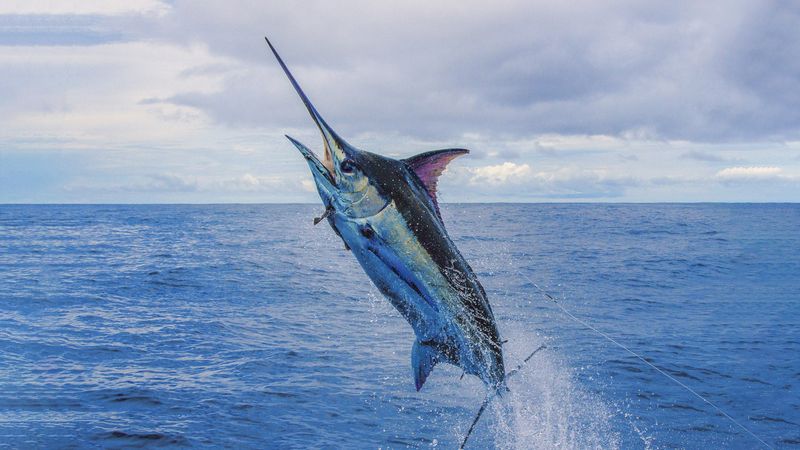
Atlantic blue marlins are ocean giants that can sprint at 50 mph. Their bills are shorter than sailfish but perfectly designed for slashing through schools of prey fish.
Female blue marlins grow much larger than males, sometimes reaching 14 feet and 1,985 pounds! These majestic speedsters are among the most sought-after game fish, known for their spectacular fighting ability and their tendency to “dance” on their tails across the water’s surface.
11. Rainbow Trout
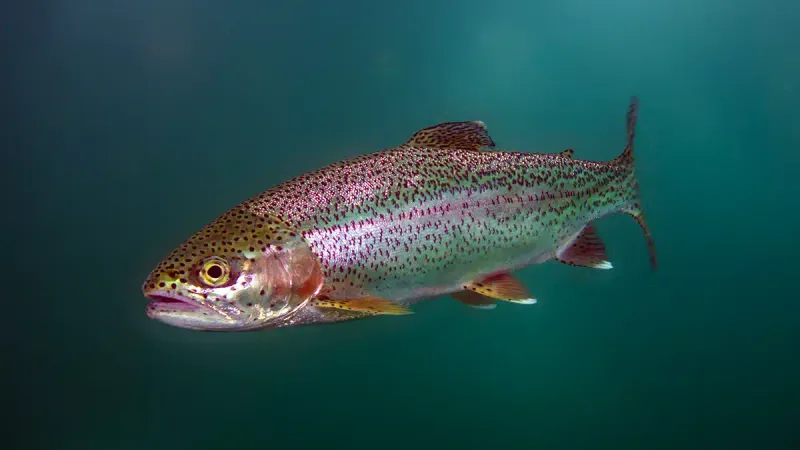
Rainbow trout bolt through water at speeds up to 25 mph when necessary. These adaptable fish live in freshwater but some become “steelhead” trout, migrating to the ocean and back.
Their streamlined bodies and powerful tails make them surprisingly quick for their size. Rainbow trout have been introduced worldwide for sport fishing, and they can dramatically change their coloration based on habitat, diet, and spawning condition.
12. Seahorses

Seahorses are the tortoises of the ocean world, moving at a glacial 0.01 mph. Instead of swimming horizontally like most fish, they maintain an upright posture using their dorsal fin to propel forward.
Their unique body shape isn’t built for speed but for camouflage among coral and seagrass. Male seahorses are the only male animals that actually become pregnant, carrying fertilized eggs in a special pouch until they hatch.
13. Blobfish
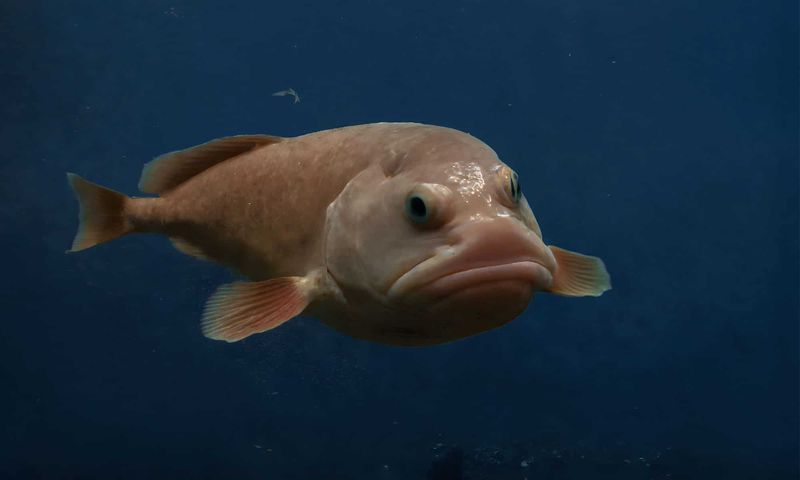
The blobfish hardly moves at all, conserving every bit of energy in its deep-sea home. At depths of 3,000 feet, its gelatinous body lacks muscle and relies on being slightly less dense than water to float along.
When brought to the surface, decreased pressure causes its body to expand into the famous “blob” appearance. In its natural habitat, this slow-moving fish actually looks more like a typical fish, though still quite sluggish.
14. Cowfish

Cowfish waddle through water with a comical, unhurried gait at just 1-2 mph. Their box-shaped bodies are covered in fused, hexagonal plates that act like armor but limit flexibility.
These peculiar reef dwellers use tiny fins that flutter rapidly to achieve even modest speeds. When threatened, cowfish can release a toxin called ostracitoxin from their skin, creating a cloud that deters predators while they make their not-so-hasty escape.
15. Parrotfish
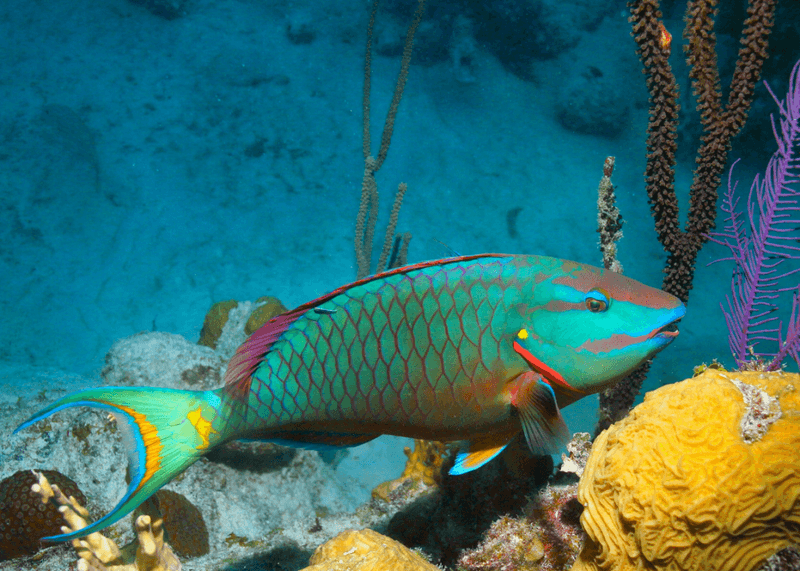
Parrotfish cruise leisurely through reefs at 5-6 mph, sporting some of the ocean’s most vibrant colors. Their fused teeth form beak-like structures perfect for scraping algae from coral.
These technicolor fish change sex during their lifetimes, typically from female to male. At night, many parrotfish species secrete a mucus cocoon around themselves while sleeping, masking their scent from predators during their vulnerable resting hours.






